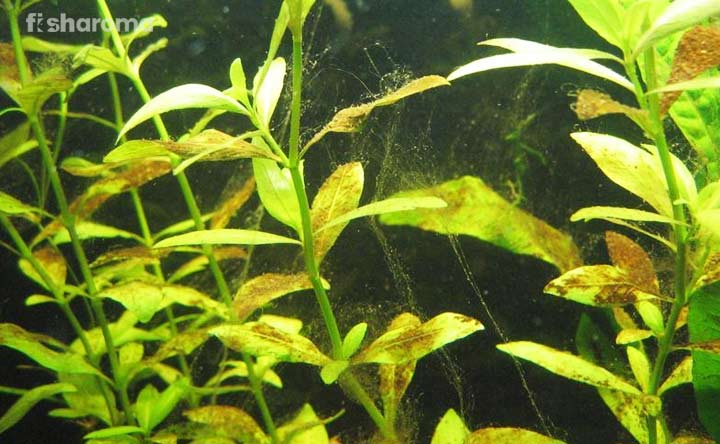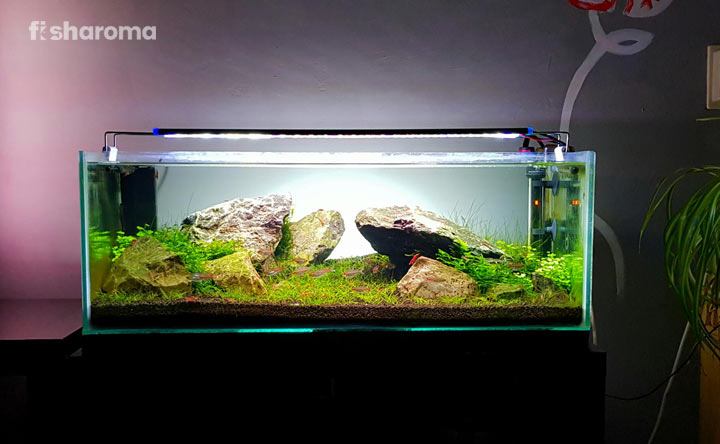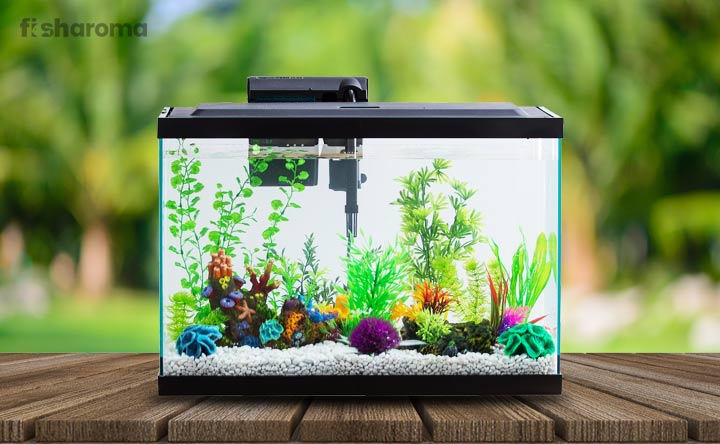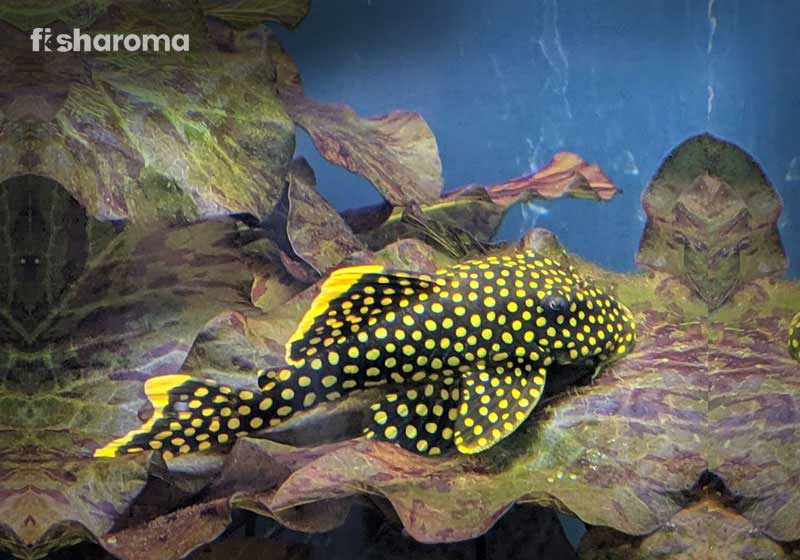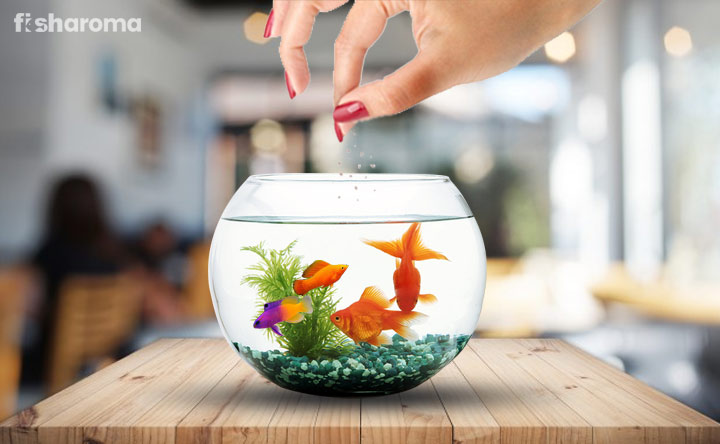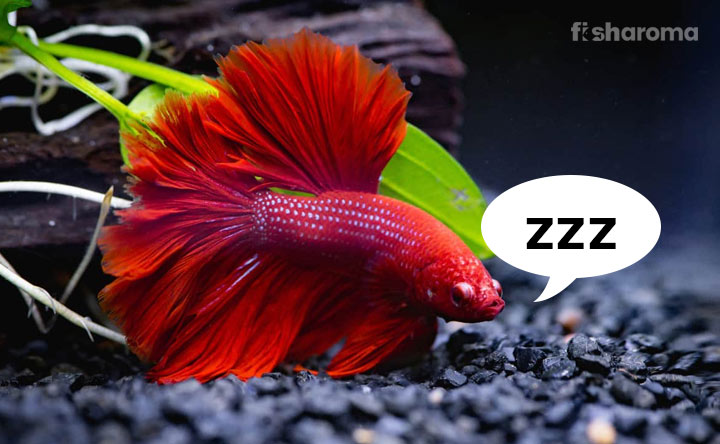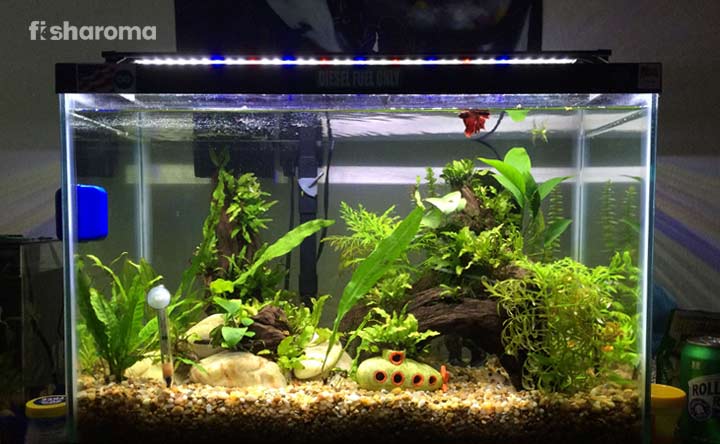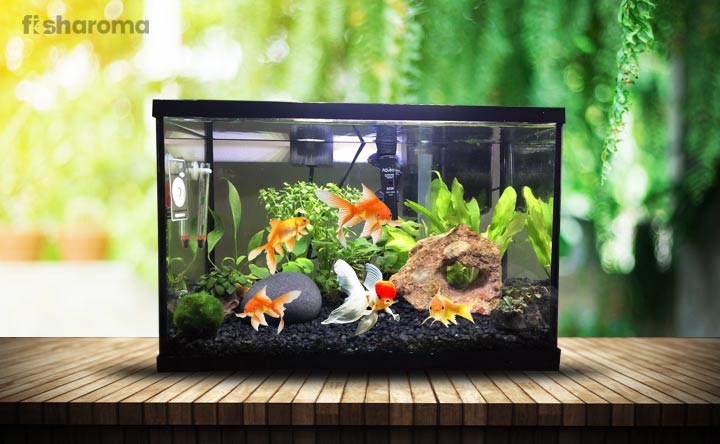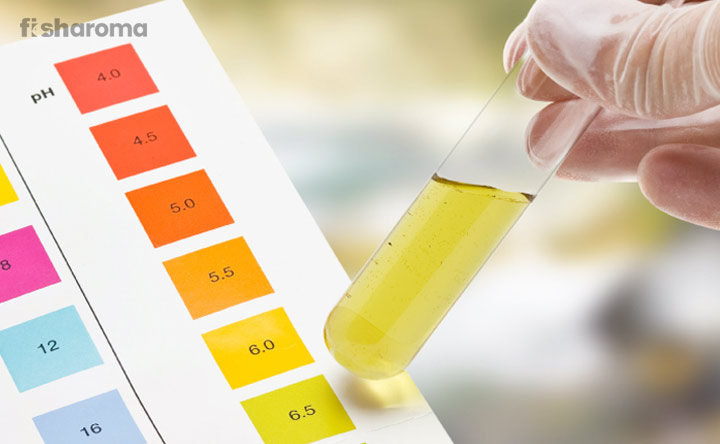15 Best Algae Eaters for Your Aquarium
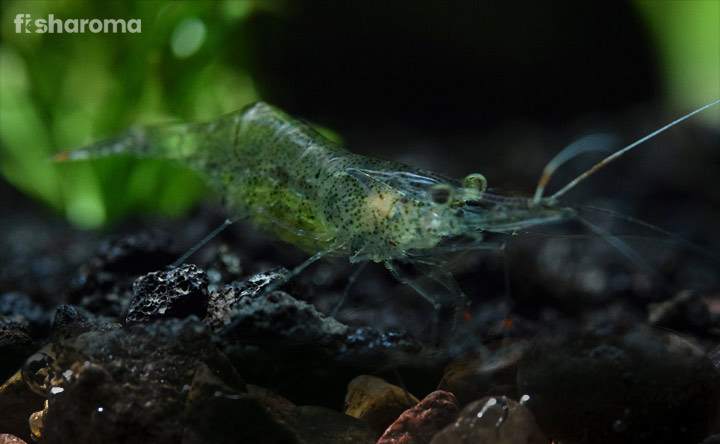
Algae in an aquarium are a natural phenomenon. It is completely normal to spot them in your fish tank. However, an abundance of them poses a threat to the life inside. It is one of the most serious issues aquarists have been dealing with for years. And although there are various ways for curbing the unnecessary growth of algae in an aquarium, nothing beats the way Mother Nature intended it to control it – through algae eaters.
Yes, there are creatures that you can pet in your aquarium that, along with other functions, will eat up the algae; thereby ensuring the environment inside is safe and clean. So, who are these special creatures? Time for us to dig deep into it!
Aquarium Algae and the Reasons for Their Growth
Before we list out the algae eaters for you, it is crucial that you understand what aquarium algae are and what causes them.
What are Algae?
Algae are the type of simple living organisms without a DNA or an organized cell structure that grow near or in water. Despite common belief, they are not a plant and do not have stems, leaves, vascular tissue or roots. However, they are able to conduct photosynthesis. Seaweeds, algal bloom, and pond scum are some of the most common examples of algae. Certain algae are not only helpful to us but are crucial for our survival as well.
However, as we have stated above, an overabundance of algae, especially in a captive environment like an aquarium, can be lethal. You need to eradicate it as soon as possible. But before you do so, you need to identify what kind of algae it is. Different algae need different treatments. The most common types of aquarium algae include:
Brown Algae
Brown Algae, also known as Gravel or Silica Algae, are the most common type of algae seen in a new aquarium. They generally coat the tank in sheets and are harmless. They go away on their own as soon as the tank matures. However, if you want to remove them, you can do so by simply wiping them off.
Red/Beard Algae
Red Algae or Beard Algae are the ones that are going to give you nightmares since they are the toughest to get rid of. In order to eradicate it, you need to mix 5-10% of a mild bleach solution for a couple of minutes in your tank water. But beware, because an excessive amount of bleach can harm your fish.
Green Algae
Green Algae are one of the healthiest algae that are seen in an aquarium. They are bound to appear in every tank to some degree. But as long as you maintain a clean tank, you don’t have to worry too much about it since they wouldn’t overgrow. They are also known as Thread Algae or Hair Algae.
Blue-Green Algae
Contrary to popular belief, this is actually not algae; it is a cyanobacterium. It is caused by an excess of phosphates and nitrates in your tank. The worst part of it is that it spreads rapidly and can cause serious damage to the fish. Proper maintenance help avoid Blue-Green Algae. You can also use Erythromycin in a cautious amount to prevent the growth of these algae since an abundance of Erythromycin will kill off beneficial bacteria. It is also known as Smear Algae or Alime Algae.
Green Water
Green Water is caused by the growth of microscopic algae that are suspended in the water. It is also known as algae bloom. You can’t be scrap or wipe it off like other algae. Replacing water is also not a solution here since the remaining algae grow back quickly. It needs drastic treatments such as usage of a diatomic filter or complete blockage of all light for several days.
Now, let us shift gear and understand what causes the growth of these algae.
Reasons for Growth of Algae
Just like any other plant form, the growth of algae is dependent on three basic necessities – water, nutrients, and sunlight. An excess of any of these three elements leads to the algae growing like a wildfire. In a captive environment of an aquarium, the overgrowth of algae takes place because of the following reasons:
- Fish tank kept directly under sunlight
- Artificial lights kept on for too long
- Not replacing the tank water over a prolonged period of time
- Overfeeding your fish
- High level of nutrients in the water
- Hitchhiker from corals or live rock purchases
- Absence of live plants
- Absence of algae eaters
The presence of algae eaters and how they help contribute to the health of an aquarium is what we are going to discuss in length in this article.
What are Algae Eaters?
Algae eaters refer to the various algae-eating or bottom-dwelling species that feed on algae. They are extremely important in the fishkeeping sector and many of them are exclusively petted for eating algae. Algae eaters are found in both freshwater and saltwater. Common algae eaters include various species of fish, snails, shrimps, crabs, among others.
Let us now take a look at some of the most well-suited and efficient algae eaters for your aquarium.
Best Aquarium Algae Eaters
The algae eaters that you need to keep in your aquarium will be dependent on the size of your tank and its conditions. The speed of the current in your tank water, oxygenation level and the type of algae in your tank will also dictate your choice of an algae eater. In addition, you also need to make sure that the algae eater that you are picking is compatible with the existing fish in your tank. Besides their benefit, their quirky look and amusing behavior also make up for a splendid addition to your tank.
Anyone or a combination of the following algae eaters should do the job of cleaning algae from the aquarium perfectly.
Best Algae-Eating Fish
If you are exclusively looking for a fish that helps eradicate algae, we recommend the following.
Siamese Algae Eater

Regarded as the algae eating powerhouse in the aquarium world, they have the ability to eat and eradicate a wide range of algae. They are mostly peaceful and stay hungry for the majority of the time, which works well for you if you have an overabundance of algae. Besides, they also curb the population of flatworms and eat up any leftover food or waste products. You can keep them in planted aquariums since they don’t harm plants.
They need at least a 30-gallon tank to survive and co-exist well with a wide range of fish such as Plecos, Barbs, Tetras, and Corydoras.
Otocinclus Catfish

One of the smallest algae-eating fish, they barely grow to a length of 1.5”. They are a perfect fit for a community tank because of their calm nature. They are not harmful to plants and are great at removing Brown and soft Green Algae from the tank.
Since they have a large appetite, it is recommended to add aquarium friendly vegetation, such as Zucchini, from time to time, in the absence of algae. Keep them in a group of at least five since they are a schooling fish. Do not keep them with Angelfish or Cichlids due to safety purposes.
Twig Catfish

One of the unorthodox choices for an algae eater that is recently gaining popularity, the Twig Catfish are known for their camouflage abilities due to their long, slender, brown body. They are an expert at eating Green Algae and are compatible with peaceful fish such as Hatchets, Rasboras, Tetras and Pencil fish.
Since they love hiding, an aquarium with lots of plants and caves is ideal. Although they accept a variety of food, they require a lot of care from the owners. They not only need a bit of current and a high oxygen level in their tank, but also pristine quality of water. In the absence of algae, you need to provide them with Spirulina algae tablets.
Bristlenose Plecostomus

A great fit for a medium-sized tank, Bristlenose Plecostomus grow up to 4” in length. They love hiding as well and do well in aquariums that have driftwoods in them. Available in black, grey, brown, albino and even gold colors, they can be quite a head-turner in your aquarium.
Another added benefit of this charming fish is that they consume Green Spot Algae, which a majority of algae eaters don’t eat. They are pretty peaceful, do well with most species of fish and are easier to maintain.
Chinese Algae Eater

Next on our list of best algae eating fish is the Chinese Algae Eaters, who are remarkably different from the other fish mentioned here, due to their hostile nature. These semi-aggressive algae eating fish is not ideal for a community tank. But their aggressive nature is also important since they are one of the very few algae eaters who can survive in a tank made up of aggressive fish such as Cichlids and Angelfish.
Growing up to a size of 10”, you would definitely need a large tank to host them. Although they are not our top recommended algae eating fish, their demand is high because not everyone can survive what they survive.
Mollies

While not particularly known for their algae-eating capacity, Mollies do qualify as one since algae is an integral part of their diet. For all those who want to pet a beautiful fish that can also serve as an algae eater, this is the fish for you.
The Black Molly, in particular, is known for eating and clearing off algae from rocks and plants. They are compatible with Platies, Tetras, Angelfish, Swordtails and Corydoras Catfish.
Best Algae-Eating Shrimps
Shrimps are the most obvious choice next to fish in an aquarium. So, if you are looking for some shrimp to do the dirty work of cleaning algae for you, here are your options.
Ghost Shrimp

There are no other aquarium species more ethereal-looking than a ghost shrimp. You can assume from their name that they have a ghostly surreal appearance. With a small transparent body, they add a different dimension to your aquarium.
Ghost shrimp are an expert Hair Algae eater. If you decide to pet them, you have to make sure that you are hosting a bunch of them together and that you are also providing them ample hiding spots. They are extremely easy to take care of and can live in a small, medium and a large tank. However, since they are part of a lot of the large fish’s diet, you need to keep them with small peaceful fish only.
Amano Shrimp

Considered to be the best algae eating shrimp, Amano Shrimps are large enough to defend themselves in a community tank. They not only eradicate soft algae, but they also help in consuming leftover food and decaying plant matter.
The only algae that they refuse to eat are Blue-Green Algae and Green Spot Algae. Try to keep them in groups. Another major aspect that you need to keep in mind is that they are vulnerable to copper, which may arise in your tank if you are using a lot of fertilizers for your aquatic plants. Thus, such a situation would require you to conduct frequent water changes.
Cherry Shrimp

Extremely popular for their bright orange-red look, they clean out algae from the hard-to-reach places that algae eating fish fail to reach. If you are a fan of breeding pets, then Cherry Shrimp is the best option for you since they breed pretty easily in a tank.
Just like their cousins mentioned above, Cherry Shrimps also eat dead plants and leftover food apart from algae. They are compatible with peaceful fish such as Otocinclus Catfish, Neon Tetra, Dwarf Rasbora, but incompatible with Angelfish and Cichlids.
Best Algae-Eating Snails
Another unorthodox choice for an aquarium is a snail. The popularity of snails is slowly but steadily on the rise. Besides being an excellent addition to your tank aesthetically, certain species of snails also eat up algae, thereby performing dual functions. Some of the most common aquarium snails that also function as algae eaters are as follows.
Nerite Snail

The most high-in-demand snail among aquarists, Nerite Snails come in a variety of colors and patterns. A proficient algae eater, Nerite Snails keep your aquarium clean without jeopardizing the health of your aquatic plants. Not only they eat harder-to-eradicate algae such as Green Beard Algae and Green Spot Algae, but their bottom-dwelling nature keeps the substrate of your tank clean as well.
Growing just a bit more than an inch, they add an aesthetic element to your aquarium. They should not be kept with large predatory fish such as Cichlids and Loaches. The two other factors that you need to keep in mind are that they are quick to escape the tank if you are not using a tank-lid and they lay hundreds of small white eggs all over your tank, which can be quite an eyesore. The pH level of their water should be more than seven at least, which is essential for maintaining the hard crunch of their shell.
Mystery Apple Snail

Mostly seen with a bright yellow shell, the Mystery Apple Snails are also seen with a brown, red and purple shell on rare occasions. Thriving on aquarium glass algae, plant algae, and substrate algae, they are known for ‘sweeping’ the tank floor with their gigantic antennas.
They require a large tank since they can grow to the size of a baseball. Please make sure that they are always well-fed, otherwise, they have a tendency to eat the live plants in an aquarium. Also, try to not keep them with large predatory fish.
Ramshorn Snails

Extremely compatible with aquatic plants, Ramshorn Snails derive their name from their shells that resemble the horn of a ram. Coming in brown and red color, they clear up the algae from your tank and also eat up dead plants.
Keep them in high alkaline water otherwise their shells will get dissolved. The pH level of the water has to be more than seven. They clean up the tank walls apart from cleaning the tank’s ornaments and rocks. Just like other snails mentioned earlier in this article, keep them with large predatory fish. They also breed quickly.
Malaysian Trumpet Snail

Known for their scavenger-hunt tactics, Malaysian Trumpet Snails dig up leftover food from the substrates of your tank, thereby clearing it. As a result, the substrate becomes aerated, which is important if you have plants in your aquarium.
They are pretty easy to take care of and are pretty peaceful in nature. The only drawback against them is that they breed so often that aquarists sometimes don’t know how to handle them. Like their cousins mentioned above, they need alkaline water for their shells to stay strong and hard. They are nocturnal creatures, coming out at night to clean up algae when most of their tankmates are asleep.
Best Algae-Eating Crabs
Although most crabs are carnivorous in nature and are incompatible with fish and other aquatic beings, there are certain species of crabs that function as algae eaters. However, it is better to opt for algae eating fish, snail or shrimp rather than a crab. But if you are specifically looking for algae eating crabs, then you should pick one of the following options.
Sally Lightfoot Crab

Sally Lightfoot Crabs are suitable for reef aquariums and are also known as Spray Crabs. They are often seen crawling all across the fish tank and feed on hair algae in a captive environment. Growing up to a size of 4”, they tend to become aggressive as they grow. Keep them in your tank only when they are small.
They also convert themselves to carnivores as they enter their adulthood stage. So, practice caution while petting them in your tank.
Emerald Crab

Known for eating Bubble Algae (a rather uncommon type of algae), Emerald Crabs are a peaceful creature and are apt for a reef tank. They also eat up uneaten fish foods, thereby ensuring there is no debris in your tank. However, if food sources are low, they become aggressive.
Whenever you buy an Emerald Crab, make sure that the species of your choice eats Bubble Algae. Also, go for a female crab since they tend to be less aggressive.
Summary
Whatever aquarium you might have, we are sure that any of the 15 afore-mentioned algae eaters should solve your algae issues. But don’t assume that having an algae eater will lessen your burden completely. You still have to ensure that the water stays clean and have to make sure that the algae eater that you are introducing to your tank meshes well with the existing personalities of your tank.
A Sneak-Peek of Our Other Fishkeeping Guides
Want to know more about fish-keeping? This is the one-stop shop for it. Check out our other fishkeeping guides.
- Most Popular Colorful Fish– Who doesn’t like a dash of color in their aquarium? Find out which colorful fish you can keep healthily pet.
- How do Fish Sleep? – The sleeping pattern of fish has always intrigued people. Understanding the sleeping cycle of fish is crucial for their healthy growth. Learn about it here.
- How to Breed Bettas? – A favorite of many fish-keepers, Bettas are a beautiful creature. Take a look at their breeding process here.

